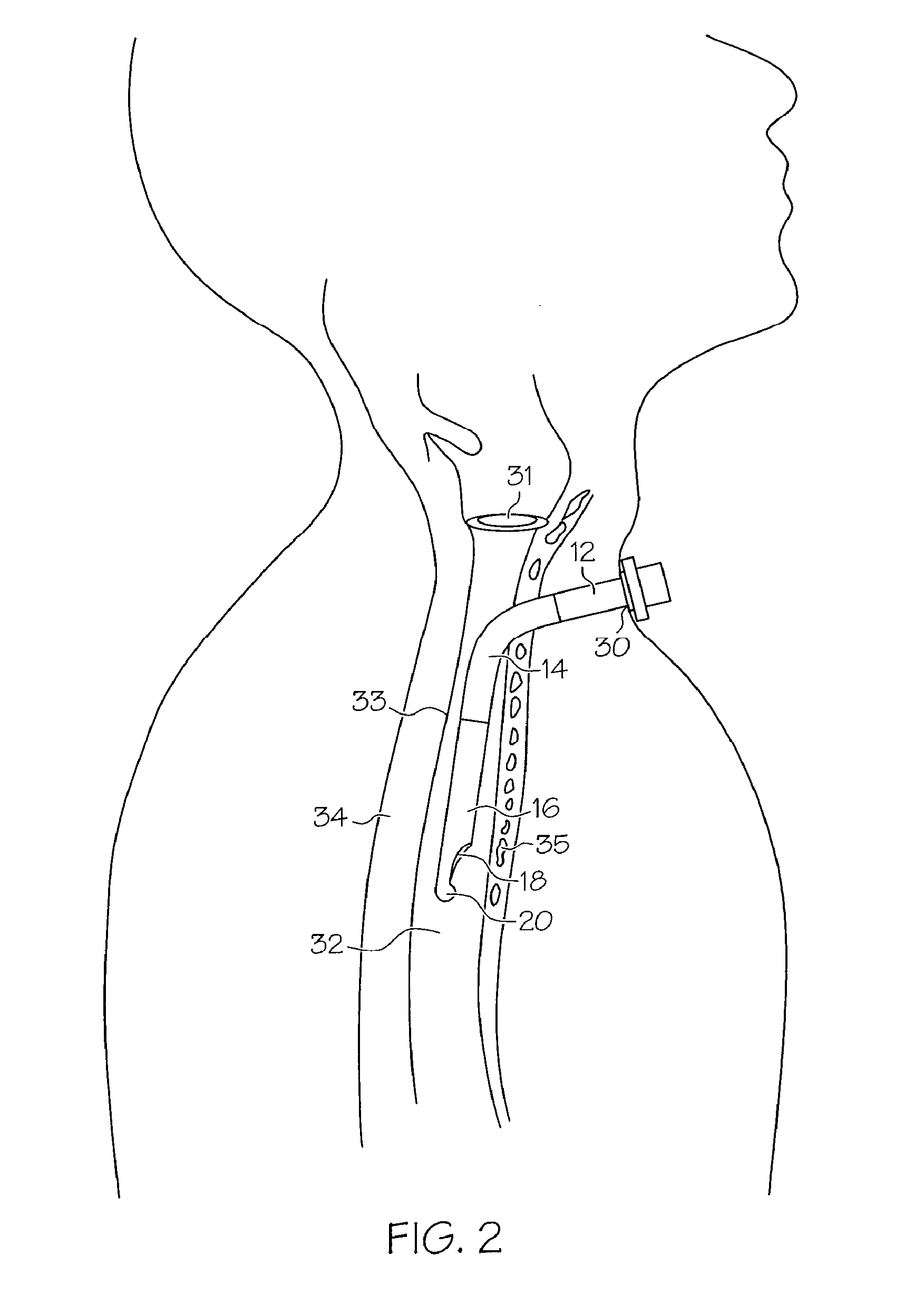Tracheostomy Tube
a tracheostomy tube and trachea technology, applied in the field of medical devices and surgical devices, can solve the problems of tracheal tubes affecting the other important upper airway tracheal tubes can interfere with the other important functions of the trachea, and tracheal tubes can also be destructive to the surrounding tissues and organs, so as to reduce the risk of damage to the mucosa, prevent distal occlusion, and the risk of occlusion
- Summary
- Abstract
- Description
- Claims
- Application Information
AI Technical Summary
Benefits of technology
Problems solved by technology
Method used
Image
Examples
Embodiment Construction
[0019]The tracheostomy tube of the invention is intended for use in children and adults with tracheomalacia, as well as in children and adults in whom the tip of the tracheotomy tube is prone to become either partly obstructed within the trachea, or is at risk of causing mucosal damage. The intermediate section of the tube is flexible, which allows the distal section of the tube to safely move within the trachea as the trachea moves. The tip of the tube, at its distal section, typically includes a beveled end with a large cross-sectional area, whereby the posterior aspect of the distal shaft is longer than the anterior aspect of the distal shaft. The tube thus does not have a tendency to become obstructed at its distal end, or cause erosion of the tracheal mucosa, as do prior art tubes.
[0020]FIG. 1 is a plan view according to a first embodiment of the present invention. In particular, FIG. 1 shows a tracheostomy tube 10 having a proximal or machine end section 12. A flexible interme...
PUM
 Login to View More
Login to View More Abstract
Description
Claims
Application Information
 Login to View More
Login to View More - R&D
- Intellectual Property
- Life Sciences
- Materials
- Tech Scout
- Unparalleled Data Quality
- Higher Quality Content
- 60% Fewer Hallucinations
Browse by: Latest US Patents, China's latest patents, Technical Efficacy Thesaurus, Application Domain, Technology Topic, Popular Technical Reports.
© 2025 PatSnap. All rights reserved.Legal|Privacy policy|Modern Slavery Act Transparency Statement|Sitemap|About US| Contact US: help@patsnap.com



